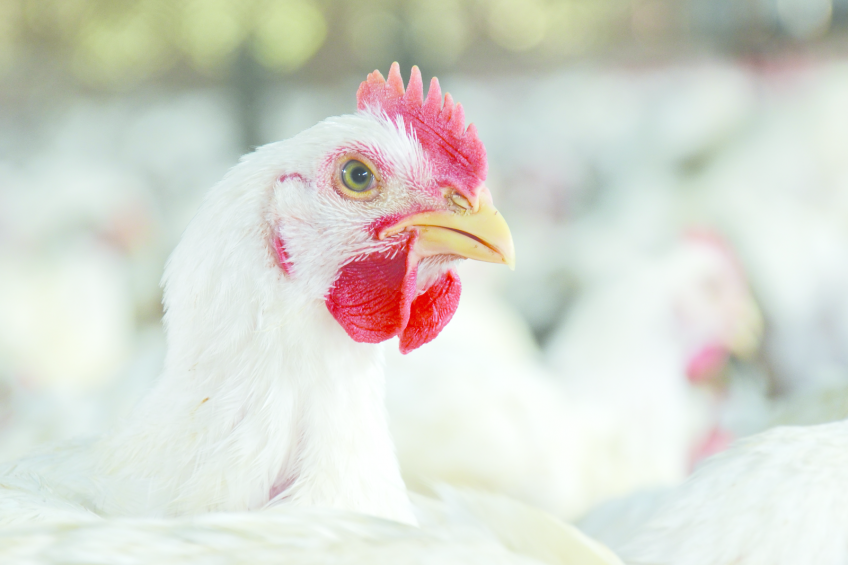Critical control points for coccidiosis vaccination

An effective way of preventing coccidiodis is vaccination at the hatchery. This only works out well if critical points are taken into account, both at the hatchery as well as in a later stage at the farm.
By Kobus van Heerden, Ceva Animal Health
Vaccination against coccidiosis in poultry is used mainly in broiler, turkey and layer breeder flocks; commercial layer flocks reared on the floor; antibiotic free broiler operations and some commercial turkey grower operations. Vaccinating with a coccidiosis vaccine in conventional broiler operations is increasing rapidly, mainly in a rotational programme with anticoccidials, aiming at restoring the sensitivity of the anticoccidials. Whatever the reason for vaccinating with a coccidiosis vaccine, attention to some critical factors will determine the level of success of establishing immunity against coccidiosis.
Positive immunity
The Eimeria parasites given during the vaccination, infects the intestinal cells and continues its life cycle inside the gut. Unsporulated oocysts are excreted after 5-7 days, time depending on the species; the oocysts then sporulate outside the bird, given suitable environmental conditions exists, and after re-ingestion of these sporulated oocysts, infection and another cycle starts. Immunity development is dependent on successful excretion of oocysts and then re-ingestion of these sporulated, shed oocysts. Depending on the species, 2-3 infection – excretion – re-ingestion – re-infection – excretion cycles are needed to acquire a protective immunity.
The vaccination process and the subsequent development of immunity, irrespective of the application method, can thus be divided in two distinct areas:
- Vaccine application – ensuring homogenous uptake of the vaccine
- Post vaccination management – ensuring suitable environmental conditions for sporulation exists and recycling of the sporulated oocysts takes place.
Vaccine application
As most of the coccidiosis vaccination worldwide takes place in the hatchery at day-old, critical factors 1 to 4 are highlighted in Figure 1 which are related to the hatchery.
1. Cold Chain
The first step in successful vaccination, is the use of viable vaccine. This is a vaccine that is used before its expiry date, has not been frozen and has not been exposed to too high temperatures.
Cold chain integrity involves the way it is shipped from the supplier to the user, as well as maintaining the temperature between 2-8⁰C while stored at the customer.
2. Vaccine preparation
Following the standard operating procedure in preparing the vaccine is essential. This is important not only to ensure vaccine integrity, but also to ensure the right concentration, and compatible with the appropriate application rate to be reached.
3. Equipment and application
The equipment used should be clean, well maintained and in a good working condition. Check the calibration regularly to make sure the recommended application rate is actually achieved.
Adequate cleaning and disinfection procedures must be followed after use of the equipment as dirty equipment can be a source of contamination and/or significantly impacting on an even application rate as required.
4. Evaluating vaccine application
The necessary procedures to actually check the vaccine uptake by the birds must be implemented.
Adding a suitable dye to the vaccine makes this possible by randomly checking boxes/crates of chicks/poults and see if they actually did ingest the vaccine by counting the number of chicks/poults in the box/crate with a dye coloured tongue (Photo 1).
Photo 1 – Adding a suitable dye to the vaccine allows to randomly see if the chicks did ingest the vaccine. The tongue will be dye coloured.
5. Brooding preparation
The brooding area should be prepared according to breed recommendations.
Particular care should be given to adequate feed and drinker space, temperature, ventilation and proper biosecurity measures.
6. Stocking density
Although technically a part of brooding setup, it is so important that it needs special attention.
As the development of immunity is dependent on successful re-ingestion of sporulated, shed oocyts, stocking density plays a critical role in creating the environment for sporulation to take place. It further puts the birds in close proximity to these sporulated oocysts that creates the opportunity for the birds to actually ingest these shed sporulated oocysts.
7. Litter Moisture
Ideal moisture level in the top 5-10 mm of the bedding/litter is between 25-35%. This is absolutely necessary in providing the moisture required for sporulation of the shed oocysts. Litter moisture can easily be measured with a handheld wood moisture meter, available at most hardware stores.
Stocking density can be used in controlling the litter moisture:
- If litter is too dry: keep birds at a higher density
- If litter is too wet: keep birds at a lower density.
8. Recycling of oocysts and monitoring
Oocyst shedding can be measured by sending faecal samples to a lab that is capable of doing an Oocyst Per Gram (OPG) count. Faecal material (NOT bedding) is collected at specific intervals post vaccination:
- Chickens at days 7/14/21/28 post vaccination
- Turkeys at days 6/13/20/27 post vaccination.
The first count should be positive. This is a very good indicator of the effectiveness of the vaccine application done in the hatchery as well as an indicator that the vaccine that was used was still infective.
The second count should show a significant increase. This is used as an indicator that the shed oocysts sporulated and re-ingestion of these shed oocysts have taken place.
[Source: World Poultry – Managing Coccidiosis, 2014]












